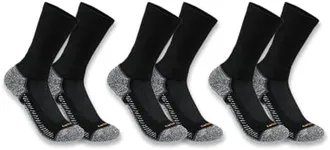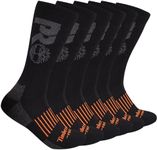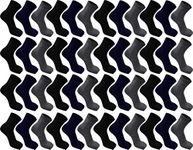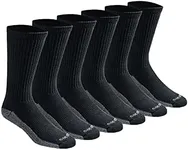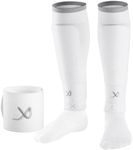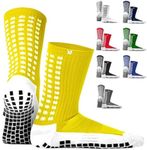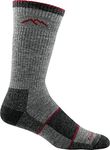Buying Guide for the Best Work Boot Socks
Choosing the right work boot socks can make a big difference in your comfort, foot health, and overall experience during long hours on your feet. The best socks for work boots should provide cushioning, support, moisture management, and durability. When shopping, it's important to consider your work environment, the type of boots you wear, and your personal comfort preferences. Understanding the key features will help you select socks that keep your feet dry, comfortable, and protected throughout the day.MaterialThe material of work boot socks determines how well they manage moisture, provide warmth, and resist wear. Common materials include cotton, wool, and synthetic fibers like polyester or nylon. Cotton is soft and breathable but can hold moisture, making it less ideal for sweaty conditions. Wool, especially merino wool, is excellent for temperature regulation and moisture-wicking, keeping feet dry and warm. Synthetics are durable, dry quickly, and often blend with natural fibers for added comfort. If you work in hot environments, look for moisture-wicking synthetics or lightweight wool. For cold conditions, thicker wool blends are best. Choose the material based on your work setting and how much you sweat.
CushioningCushioning refers to the extra padding in the sock, especially in the heel and toe areas. This padding helps absorb shock and reduce foot fatigue during long hours of standing or walking. Socks can range from lightly cushioned to heavily cushioned. Light cushioning is suitable for snug-fitting boots or if you prefer a closer fit, while medium to heavy cushioning is better for high-impact work or if your boots have a hard sole. Consider how much time you spend on your feet and the comfort level of your boots to decide how much cushioning you need.
HeightSock height is how far the sock extends up your leg. For work boots, crew and over-the-calf heights are most common. Crew socks reach mid-calf and are suitable for most standard work boots, while over-the-calf socks provide extra protection and are ideal for taller boots or if you want to prevent chafing from boot tops. Ankle socks are generally not recommended for work boots as they can slip down and offer less protection. Choose the height that matches your boot style and the level of coverage you prefer.
Moisture ManagementMoisture management is the sock's ability to wick sweat away from your skin and dry quickly. This is important to prevent blisters, odor, and fungal infections. Socks with good moisture management are made from wool or synthetic fibers designed to pull moisture away from your feet. If you work in hot or humid conditions, prioritize socks labeled as moisture-wicking or quick-drying. If your feet tend to sweat a lot, this feature should be a top priority.
DurabilityDurability refers to how well the socks hold up to repeated wear and washing. Reinforced heels and toes, as well as high-quality materials, contribute to longer-lasting socks. If your work is physically demanding or involves a lot of walking, look for socks with reinforced areas and strong stitching. Durable socks will save you money and hassle in the long run by lasting longer and maintaining their shape.
Fit and CompressionFit is how snugly the socks hug your feet and legs, while compression refers to gentle pressure that can improve circulation and reduce swelling. A good fit prevents bunching and slipping, which can cause blisters. Some work boot socks offer mild compression, which can be helpful if you stand for long periods or experience leg fatigue. Choose socks that fit well without being too tight, and consider compression if you want extra support for your legs.

